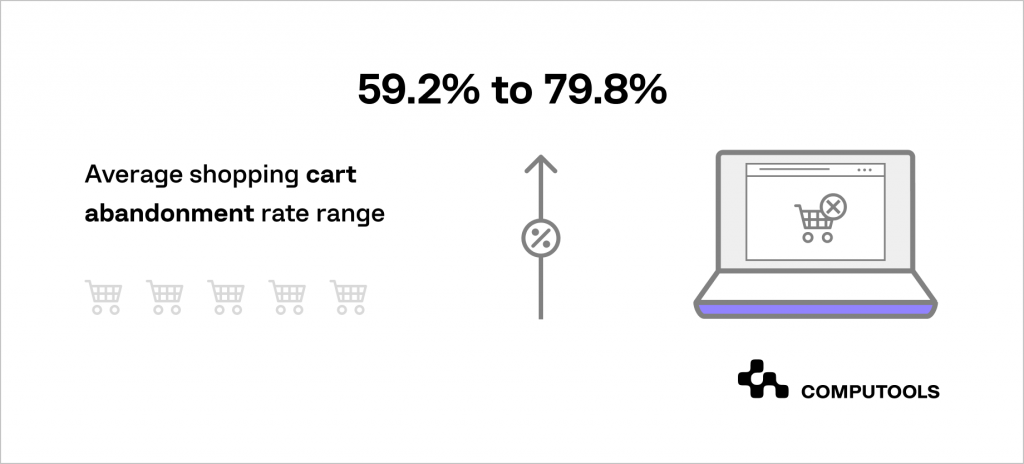Global Marketplace Landscape
Online shopping has evolved far beyond simple website transactions, now encompassing a diverse array of tools that include both e-commerce websites and expansive marketplaces featuring a broad spectrum of products.
The idea of creating a marketplace where third-party vendors can sell their products and services directly to consumers has significantly grown due to the recent pandemic.
This has led to the rise of numerous marketplace development trends which support transactions between buyers and sellers on a unified platform.
These marketplaces often operate under different models, such as B2C (business-to-consumer), B2B (business-to-business) and C2C (consumer-to-consumer), each pursuing their own goals.
According to Statista, marketplaces now represent one-third of global digital purchases, becoming more popular with each passing year.
Starting a marketplace, inspired by giants like Amazon, Airbnb or Lyft, is an ambitious and exciting choice. To succeed, you need a strategic development approach, considering challenges like low customer retention and choosing the right development methodology.
This article delves into the challenges and solutions associated with developing a marketplace platform. Continue reading to discover strategies for navigating challenges and gain valuable insights.
Navigating 10 Marketplace Challenges: Innovative Solutions
1. Limited Brand Awareness
Challenge: New marketplaces must actively earn trust and recognition from consumers, especially in fierce competition.
To cut through information overload and highlight the marketplace’s unique value, strategic positioning becomes essential.
Actively maintaining a secure and reliable platform along with providing excellent customer service might be challenging for many businesses.
Solution: First, prioritise the adoption of search engine optimisation (SEO) strategies to enhance the visibility of your marketplace in search rankings, as a significant 75% of internet users do not venture beyond the first page of Google search. SEO can attract more visitors and boost transactions by making your site more discoverable.
Another effective solution is to form collaborations with established brands that share your target audience. Co-branding initiatives can foster trust and establish connections with potential customers. Choose partners with a positive reputation to improve the image of your marketplace.
Additionally, do not overlook the power of social media. Through targeted ads and engagement strategies, you can reach broader audiences and grow your community.

2. Navigating Market Competition
Challenge: Facing intense competition is a common challenge for online marketplaces. With numerous businesses vying for customer attention, standing out requires strategic planning and creative approaches.
Solution: Begin by conducting a thorough analysis of your competitors. Understanding their strengths and weaknesses allows you to adjust your strategy effectively.
Evaluate the pricing, product offerings, marketing strategies, micro-marketing and customer service of other businesses.
This knowledge will inform decisions on how to position your business in the marketplace.
Ensure that the product or service you offer maintains top-notch quality to encourage repeat business. Create unique experiences, such as exclusive offers or special discounts, to set your business apart. Providing experiences that are only available through your company can attract audiences seeking something distinctive.
3. Addressing Cart Abandonment
Challenge: Online marketplaces commonly face the challenge of cart abandonment, where customers initiate a purchase but do not complete the transaction.
According to Finance Online, the average cart abandonment rate varies between 79.8% and 59.2%, depending on the industry.
Solution: To address persistent cart abandonment, focus on enhancing the checkout experience. Keep the process simple, straightforward and user-friendly to minimise consumer effort.
Introduce a one-click checkout option, allowing immediate access to various payment methods for a smoother transaction.
Additionally, implementing a live chat box can be beneficial in promptly addressing customer concerns during the checkout process. This tool streamlines communication, reducing instances of abandoned carts.

4. Ensuring Customer Data Security
Challenge: In the world of online shopping, keeping customer information safe is a big challenge, especially when both shop owners and the marketplace itself can access this information.
This often makes it unclear who is responsible for protecting the data. Customers worry about their privacy when buying online, making it important for sellers to take steps to keep their information secure.
Solution: Sellers should consider using advanced security systems to protect customer information during the buying process.
With new online threats appearing all the time, it is important to stay ahead by quickly finding and resolving any marketplace issues that can affect customer data.
Cooperating with reliable cybersecurity specialists can make your work easier, as cybersecurity is an ongoing process requiring a team with diverse skills.
Making customer privacy a top priority is key to earning their trust. Trust is very important for customers when choosing where to shop, and if a website does not look safe, they are likely to shop elsewhere.
By clearly showing that you are working to keep their data safe and option for reliable web development services, you can build trust with customers, leading to more sales.
5. Growing Customer Expectations
Challenge: Adapting to the escalating expectations of customers in the online retail sector is challenging yet essential. In a saturated market, customers increasingly seek an enhanced shopping experience, demanding personalised recommendations, swift shipping, seamless checkout processes and reliable service.
Solution: One critical focus area is optimising for mobile use. Statista states that mobile e-commerce sales hit US$2.2 trillion in 2023, constituting 60% of all global e-commerce sales, emphasising the need for a smooth mobile shopping experience.
Also, consider mobile app development to enhance customer engagement rates and offer improved functionality to your users.

Prompt customer service is equally important. A well-trained customer service team, equipped with effective problem-solving skills and a streamlined enquiry tracking system, ensures immediate and satisfactory responses.
Also, leveraging data analytics plays a key role in understanding and meeting customer needs. By gaining insights into conversion drivers and identifying areas for improvement, retailers can tailor offerings to meet specific preferences, fostering long-term loyalty.
6. Tackling the Dual Challenge in Marketplace Launch
Challenge: When starting a new marketplace, a key task is finding the right balance between attracting sellers and enticing buyers. The important question is: which group should come first?
Solution: Let us explore some strategies to address this fundamental dilemma.
Attract sellers first: a practical first step is to focus on gathering a solid group of sellers to offer a diverse and appealing range of products or services. Encourage sellers to join by providing perks like financial rewards or exclusive benefits. This approach aims to build a robust catalogue that can later attract buyers.
Attract buyers first: while presenting its challenges, prioritising buyers, especially in niche markets, can be effective. Offer incentives to early buyers, such as discounts or promotional credits for signing up, to build a customer base eager for your marketplace’s offerings. This approach focuses on creating demand that, in turn, attracts sellers interested in reaching potential customers.
Simultaneous attraction: amore nuanced strategy involves appealing to both sellers and buyers simultaneously. Encourage participants to take on both roles, fostering a lively and self-sustaining community.
7. Improving Customer Retention
Challenge: Another significant challenge faced by marketplaces is the struggle to keep customers engaged for the long term. Often, businesses focus more on acquiring new customers and overlook the importance of retaining their existing client base.
Solution: To tackle this challenge, implementing a subscription-based model for sellers can be a positive step. By introducing subscriptions, companies aim not only to increase profits but also ensure that clients remain committed throughout the subscription period.
Another effective strategy is to create personalised experiences. This begins with conducting customer surveys to understand the unique needs of both buyers and sellers.
Armed with this insight, businesses can focus on delivering personalised recommendations for various products. This personalised touch not only addresses individual preferences but also strengthens the overall customer experience, solving many marketplace problems.
8. Choosing the Wrong Development Platform
Challenge: When businesses engage a website development company to build their marketplace, a common pitfall is choosing the wrong development platform. The complexity of e-commerce marketplaces often leaves sellers uncertain about how to initiate the development process.
Owners must recognise that there is no one-size-fits-all solution, as different businesses have different needs.
Solution: Businesses have several options to consider for their marketplace development. One option is leveraging open-source solutions, which provide a level of customisation through plugins and features, allowing the marketplace to become operational in a matter of weeks.
Another approach is opting for a software as a service (SaaS) solution, where, through a subscription fee, the marketplace can quickly become functional within a few weeks.
Thoroughly evaluating these options is essential, taking into account the specific challenges and solutions of marketplaces.
9. Scalability Marketplace Challenges
Challenge: The long-term success of an e-commerce platform depends on the ability to regularly introduce new features and content, supported by adequate resources. It is important to devise a strategic plan to foster sustained business growth without sacrificing quality or customer satisfaction.
Solution: To overcome the challenge of scalability in e-commerce, adopting an agile approach is essential. Investing strategically in automation is a key step towards becoming more agile.
By automating core processes such as inventory management, customer enquiries and email marketing, you can enhance operational efficiency and reduce the likelihood of manual errors.
Moreover, monitoring key performance metrics is useful for early detection of areas needing enhancement. Analytics tools, such as Google Analytics, provide deep insights into customer behaviour, helping tailor responses more effectively to meet customer needs.
10. Improving Timely Delivery in Order Fulfilment
Challenge: Modern consumers expect timely and efficient order fulfilment. This process involves assembling items, packing and delivering them to customers.
To meet these growing expectations, online marketplaces must optimise their strategies, focusing on supply chain management, operations, staffing and delivery protocols to avoid delays and maintain service quality.
Solution: We recommend systematically optimising the fulfilment process by analysing the picking, packing and shipping stages to identify and address operational inefficiencies.
Outsourcing delivery to a third-party provider can significantly enhance efficiency and alleviate the bottleneck of delivery, leveraging the provider’s network and expertise for cost-effective solutions.
Outsourcing also enables businesses to offer competitive delivery options, such as affordable same-day shipping, ultimately boosting customer satisfaction.
Choosing a company with specialised expertise and experience for your tasks is a critical strategic decision.
For example, Computools’ team provided technological support to Shedyourfat, a US-based healthcare products marketplace. The company faced issues with outdated systems and inefficient processes, causing order processing delays and increasing customer dissatisfaction.
Computools offered the client a comprehensive digital transformation strategy that included developing a digital roadmap, redesigning a marketplace platform, optimising search engine presence and initiating a targeted marketing campaign.
Through these solutions, the client tackled the most concerning marketplace challenges discussed above and achieved its business goals, enhancing customer interaction and increasing sales opportunities.
Anticipating the Future of Marketplaces: Trends and Insights
The marketplace niche has experienced rapid changes, leading to the diversification of business models. Here, we provide insights and forecasts for the evolving landscape.
1. Rising Standards in Product and Brand Content
Consumer expectations for immersive and visually compelling online brand experiences have raised the standard for product and brand content. This shift towards high-quality content is anticipated to introduce new metrics like ROC (return on content), focusing on quantifying the value of content investments.
2. Consumer-Driven Focus on Sustainability
Consumer preferences continue to drive a focus on sustainability, increasing the demand for eco-friendly products and services. Platforms and apps prioritising environmental criteria are gaining traction, reflecting a broader industry commitment to sustainability.
3. Emerging Innovations
Several groundbreaking technologies are poised to dominate the future, including AI chatbots, blockchain and NFTs. While these introduce innovative approaches to traditional sales models, ethical considerations may arise. These developments signal a transformative period in retail, emphasising the importance of adaptability, innovation and a keen understanding of consumer expectations.
Final Thoughts
Adding online marketplaces to your e-commerce strategy, whether alongside your website or as the primary platform, provides access to a global audience and cost-effective sales opportunities.
However, the development process presents its own set of marketplace challenges. Streamlining buying processes, managing customer privacy and creating a unique brand identity are key to success in online selling.
If you have questions, contact us at info@computools.com. We’re here to help you navigate marketplace technologies for your business growth.

Computools
Software Solutions
Computools is a digital consulting and software development company that delivers innovative solutions to help businesses unlock tomorrow.









“Computools was selected through an RFP process. They were shortlisted and selected from between 5 other suppliers. Computools has worked thoroughly and timely to solve all security issues and launch as agreed. Their expertise is impressive.”